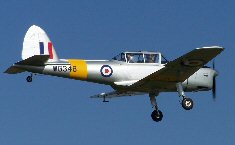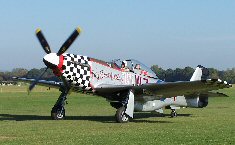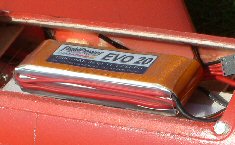|
|||
|
|
|
||
| View Shopping Cart |
| Home |
| Guides Available |
| About the Author |
| FAQs |
| Testimonials |
| Articles |
| Contact Andrew |
| Terms & Conditions |
| Mailing List |
| Links |
 |
 |
Get more great
articles like this one absolutely free with every
Gibbs Guides e-magazine. Join
the mailing list!
How to Choose an Electric Power System
A simple guide for RC modelers - Part 1
Article by Andrew Gibbs

The intention of this article is to provide the reader with a simple, easy to understand appreciation of how an electric power system can be chosen for an RC model. I've found that other guides may jump straight in to the 'how to' portion, without equipping the reader with the necessary background knowledge of the terms used. For this reason, this article starts with a brief foundation.
The simplest possible method of choosing a power system is by using the quick reference tables in the Gibbs Guide Power System Solutions – these work everything out for you in a really simple way. However, if you prefer work things out for yourself, then I hope that this article will prove to be useful.
New thinking
With i.c. (gas) powered models, the power system is generally chosen starting
with the engine and prop. Electric power requires slightly different thinking;
first the amount of power required is decided on, then the battery and
electronic speed controller (ESC) are chosen, and then finally the motor
and propeller. Let’s take a walk through the process.
Electric Power
Electric power is measured in Watts. The power consumption of a system
is easily and simply worked out like this:
Power (Watts) = Volts (Volts) x Current (Amps)
When a battery is working hard, its voltage will fall somewhat. The actual voltage will depend on the battery’s state of charge, the load it is supplying and its own internal resistance. A good rule of thumb is to say that in practice, the average voltage of a part discharged lipo battery will be somewhere around 3.6 Volts per cell when it’s flying a model. For example, a 3S system will average around 10.8 Volts (3 x 3.6 = 10.8). So for example, a 3-cell (sometimes written 3S) lipo system supplying 37 Amps will be consuming about 400 Watts:
Power (Watts) = 10.8 Volts x 37 Amps = 400 Watts
Rounding figure up and down
It’s important to appreciate that the calculations made during this
process cannot exactly match actual practice because the battery voltage
will change continuously during flight in response to varying current
demands and as its state of charge falls. So as we work through this process,
we will find it convenient to round figures up or down for simplicity.
For example, we might work out a current of 55.6 Amps, but round this
up to 56 Amps for our convenience.
Abbreviations
For convenience, Watts is sometimes shortened to W, Amps to A and Volts
to V.
Power Loading
The ratio of an aircraft's weight to its power is called the power loading.
Full size aircraft vary considerably in their power loading, for example
a Piper Cub has a power loading of 40 Watts per pound of model weight
(40W/lb), whereas a Pitts Special has almost 120 W/lb. Two different low
wing all-metal monoplanes are compared below to illustrate possible differences
in power loading:
| This Chipmunk has a maximum take off weight of 2,200lbs. Its 145hp (108KW) engine gives it a power loading of 49W/lb. (click image to enlarge, and for more information). | 3 The P51 Mustang is also a low wing all metal monoplane. 1,720hp (1,282kW) and a max take off weight of 12,100lbs mean a power loading of 106W/lb (click image to enlarge, and for more information) |
Model Power Loading
Similarly, different types of models need different power loadings. It
turns out that models can sucessfully use power loadings which are similar
to full size aircraft. However, for more satisfying performance, its usual
to provide a model with relatively more power than a full size machine.
The table below illustrates:

Worked example - a small sport model
Let’s take the example of a small, fairly fast sport model. We want
the model to have a good performance, so this means our target is 100-125
Watts per pound. The model is estimated to weigh 3.0lbs ready to fly,
so that means 300-375 Watts of power will be required. Let’s say
350 Watts. Now that we’ve decided on the amount of power required,
a suitable battery can be chosen.
Battery voltage
The 350 Watts of power that we need can be generated in two ways; we can
either use a 3-cell lipo battery (3S battery) at 32.4 Amps (10.8 Volts
x 32.4 Amps = 350 Watts), or a 4S battery (say 14.4 Volts) at the lower
current of 24.3 Amps (14.4V x 24.3A = 350W).
Either way will work, but we’ll opt for a 3S battery in this case as we have plenty of these in stock. So that’s the cell count taken care of, and for simplicity we can round up the expected current to 33 Amps.
| This 3S lipo is nominally 3.7 volts per cell, and has a maximum charge voltage of 12.6 volts. When working out power system details, an on load voltage of 3.6V per cell can be used. | A good rule of thumb is to aim for a battery with a capacity in mAh up to 100 times the expected current in Amps. For example, if the current was 17 Amps, we might choose a battery up to 1,700mAh. |
Battery capacity
But what capacity battery do we need? The higher the capacity, the longer
the model will fly for. A good rule of thumb is to aim for a battery with
a capacity in mAh up to 100 times the expected current in Amps. For example,
if the current was 17 Amps, we might choose a battery up to 1,700mAh.
Similarly for a current of 25A, a battery up to 2,500mAh would be fine.
If duration is particularly important, then this factor of 100 can be
used, while if light weight is particularly important for a particular
model then a factor perhaps as low as 70 can be used. The smaller battery
trades duration for lightness.
In the case of our example model, the expected current is around 33 Amps, so a battery with a capacity up to 3,300mAh will be suitable. In this case, we want a reasonably light model but one which also has good flight duration, so we’ll choose a battery a little smaller than this. For this model, a battery capacity of 3,000mAh should work well.
Battery C rating
The C rating of a battery is an indication of its ability to provide current.
The higher the rating, the more suited that battery is to supplying a
high current demand. C ratings from 20 or 25 right up to 50 and beyond
are common. Any of these should be capable of providing the required current
using the rules of thumb mentioned here, although if your battery is relatively
small a high C rating is a better choice.
When buying batteries, its worth bearing in mind the issue of quality.
Good quality batteries will have a lower resistance, meaning they will
run cooler for any given current, providing higher performance. Good quality
batteries will also probably last longer. So, even though they cost more,
higher quality batteries may well offer better value for money than cheaper
packs.



